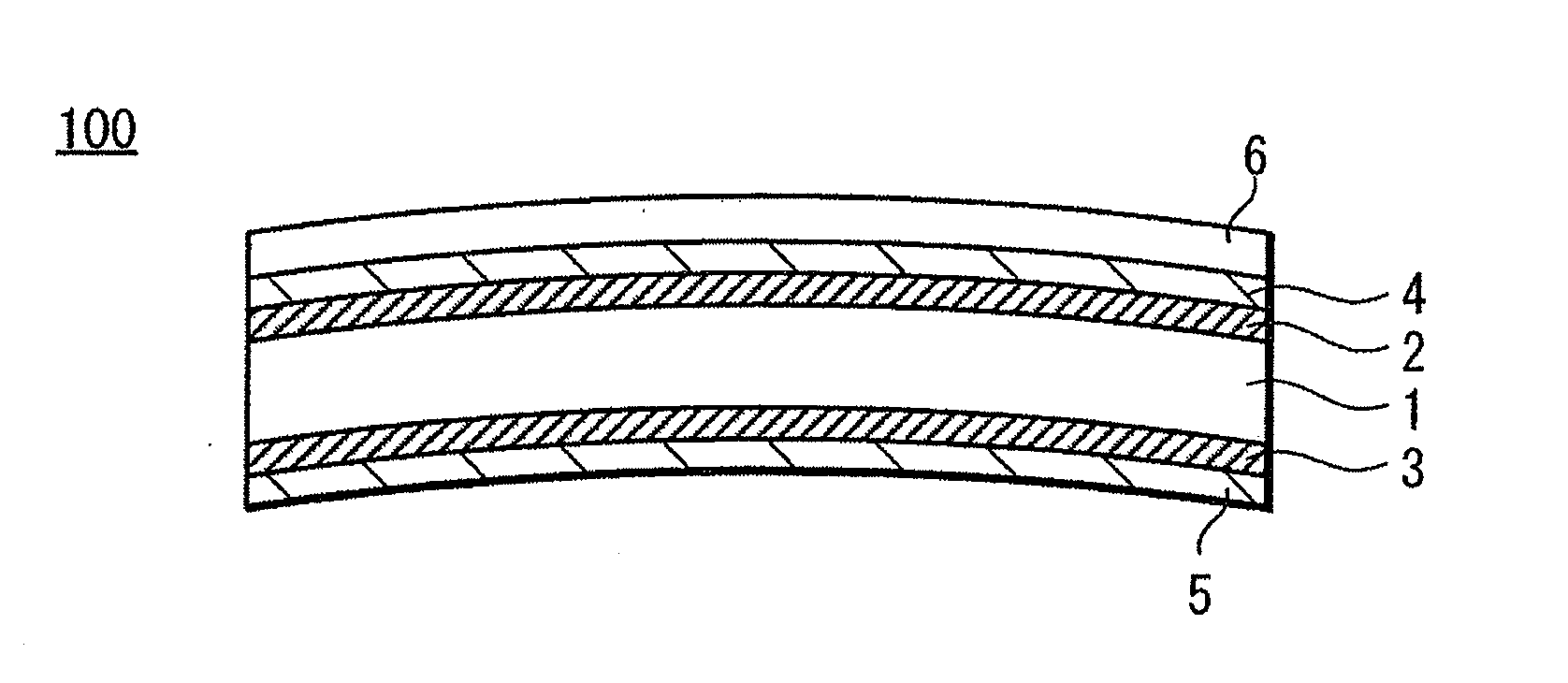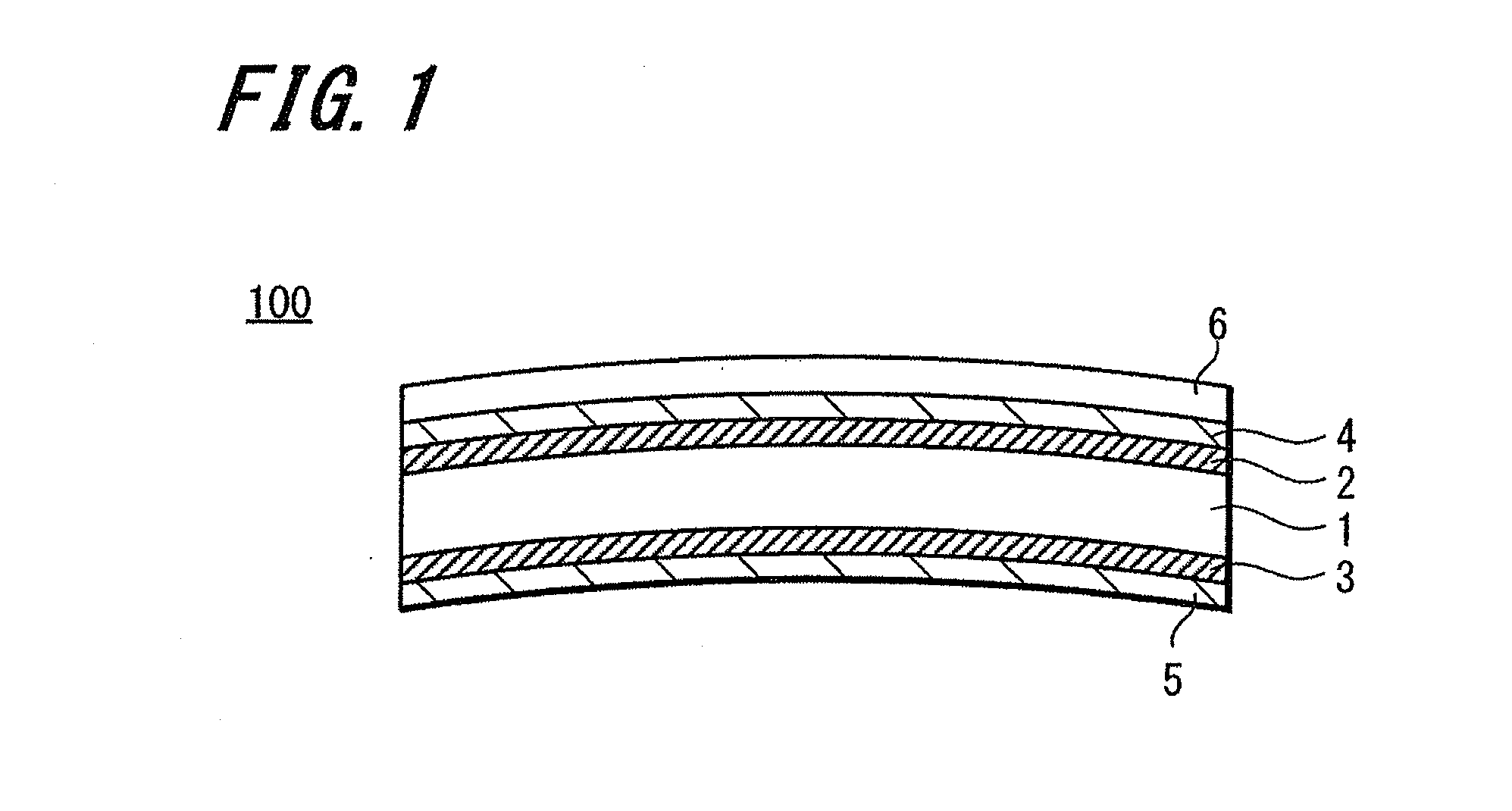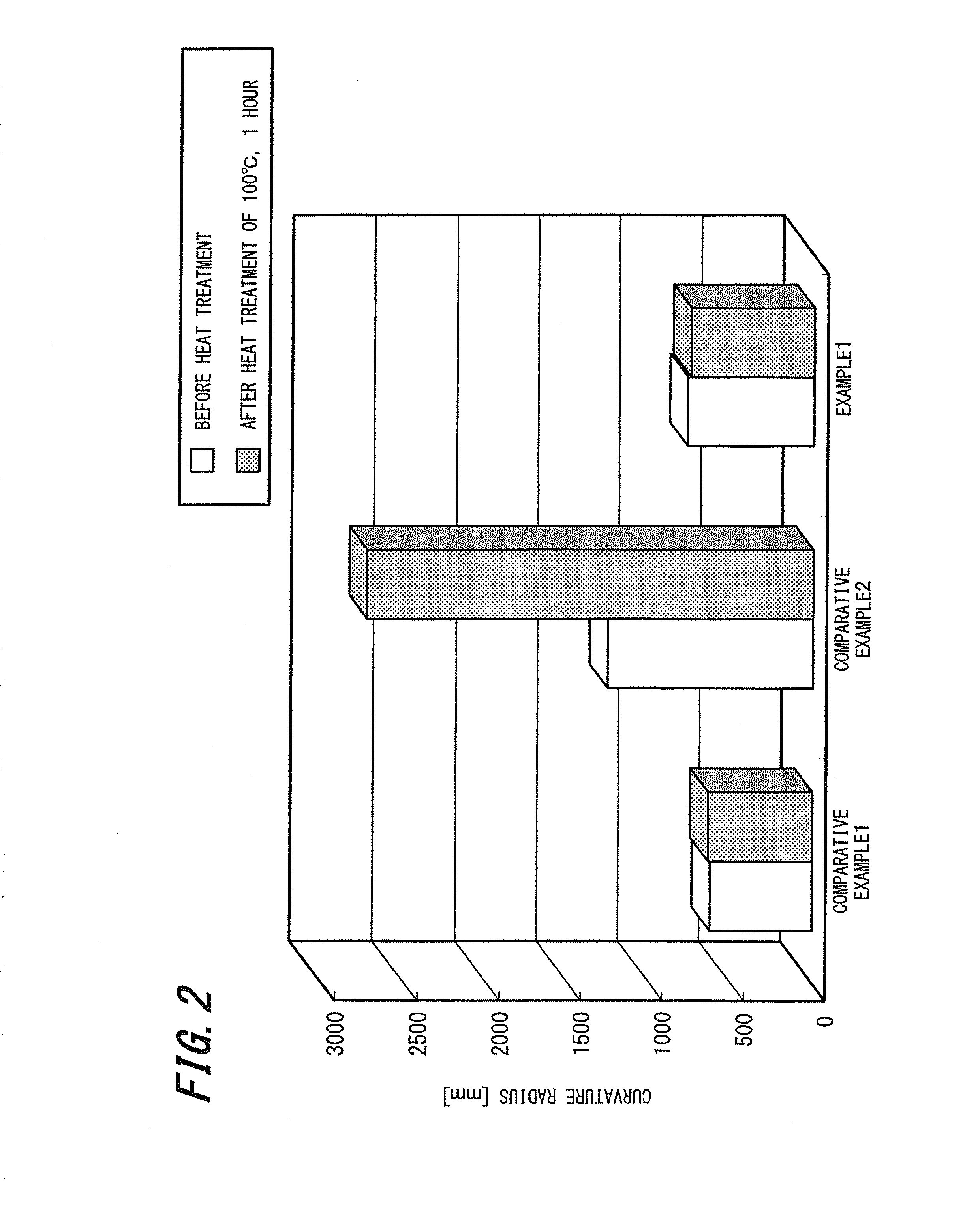Plastic lens
- Summary
- Abstract
- Description
- Claims
- Application Information
AI Technical Summary
Benefits of technology
Problems solved by technology
Method used
Image
Examples
example 1
[0095]Hereinafter, Examples of plastic lenses according to the present invention will be described.
[0096](1) Preparation of Photochromic Liquid
[0097]First, in a plastic vessel, there were prepared 100 parts by mass of radical-polymerizable monomers that includes 20 parts by mass of trimethylolpropane trimethacrylate, 35 parts by mass of BPE oligomer (2,2-bis (4-methacryloyloxypolyethoxyphenyl) propane), 10 parts by mass of EB6A (polyester oligomer hexaacrylate), 10 parts by mass of polyethylene glycol diacrylate having an average molecular weight of 532 and 10 parts by mass of glycidyl methacrylate.
[0098]Next, there were added, as ultraviolet polymerization initiators, 3 parts by mass of chromene as a photochromic dye, 5 parts by mass of LS765 (bis(1,2,2,6,6-pentamethyl 4-piperidyl)sebacate and methyl (1,2,2,6,6-pentamethyl 4-piperidyl)sebacate) as antioxidants, 0.4 parts by mass of CGI-184 (1-hydroxycyclohexyl phenyl ketone) and 0.1 part by mass of CGI403 (bis(2,6-dimethoxybenzoyl-...
example 2
[0109]In the same way as in Example 1 except that the photochromic liquid was coated on the concave surface of the plastic substrate by spin coating for 12.5 seconds at 900 rpm and the stress compensation film was formed, two plastic lenses were manufactured, for which the change in the refractive power of the plastic lenses was examined for every process described above.
example 3
[0110]In the same way as in Example 2 except that the photochromic liquid was coated on the concave surface of the plastic substrate by spin coating for 12.5 seconds at 800 rpm and the stress compensation film was formed, two plastic lenses were manufactured.
PUM
 Login to View More
Login to View More Abstract
Description
Claims
Application Information
 Login to View More
Login to View More - R&D
- Intellectual Property
- Life Sciences
- Materials
- Tech Scout
- Unparalleled Data Quality
- Higher Quality Content
- 60% Fewer Hallucinations
Browse by: Latest US Patents, China's latest patents, Technical Efficacy Thesaurus, Application Domain, Technology Topic, Popular Technical Reports.
© 2025 PatSnap. All rights reserved.Legal|Privacy policy|Modern Slavery Act Transparency Statement|Sitemap|About US| Contact US: help@patsnap.com



